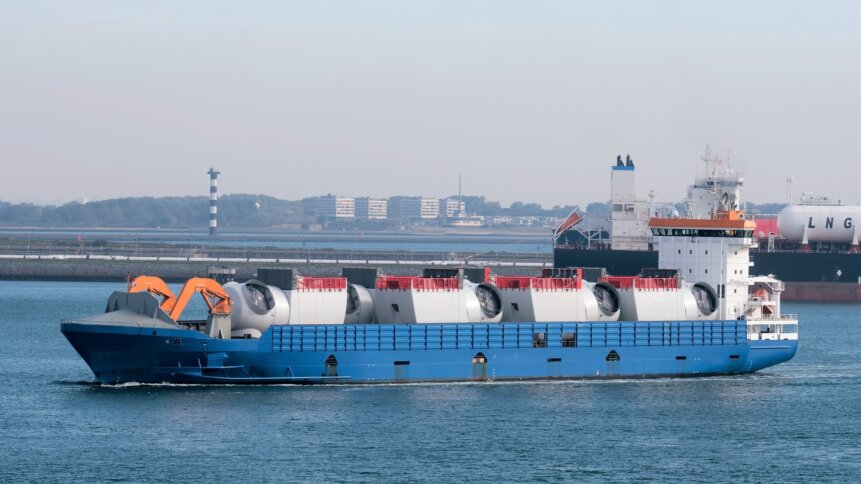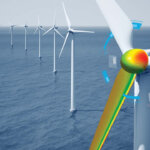Asian boost to Euro offshore wind adds tech play

Big tech firms have had to learn some tough lessons in recent years. Supply chain disruption has ripped up the just-in-time playbook. More recently, the war in Ukraine has put energy security high on firms’ agendas. And while both events have shocked markets, fossil fuels have long been a disruptive influence. What’s different today, is that firms appear to have had enough. More and more companies are striking deals with renewables providers. Today, if you run a search query for ‘companies pledging to achieve 100% renewable energy usage’, the return string has probably never been longer.
Global trend
Switching industrial operations to renewable power is a huge global trend. And while for solar PV systems, Chinese firms have been dominant in the market. That’s not the case for offshore wind where European technology still leads the way. Europe has numerous sites where renewable energy can be deployed profitably. In fact, the optimum location – according to some analysts – could be Spain thanks to a strong combination of sun during the day and wind at night. But against a backdrop of high fossil fuel prices, every country is looking to up its capacity for renewably sourced power.
A case study published this month by the International Renewable Energy Agency (IRENA) showed that Indonesia’s share of renewable energy could reach two-thirds of the country’s total energy mix by 2050. And what’s particularly striking about the forecast is that the renewable pathway is more cost-effective than fossil fuels. When renewable power brings both an improved bottom line and energy security to the table, business leaders have an easy decision on their hands. Governments too have sharpened their strategy on renewables, including countries such as Japan, Taiwan, and South Korea.
Energy security in this sense relates to reducing geopolitical risk. Renewables themselves experience fluctuations depending on weather conditions, but you can stack the odds by combining wind and solar on energy grids – for example, gaining the ability to generate power during the night. IRENA projections suggest that ASIA could move ahead of Europe towards the end of 2030, in terms of offshore wind capacity. Currently, the record for the largest offshore wind farm goes to Hornsea 2, a constellation that features 174 wind turbines located off the Yorkshire coast in the UK. Each turbine is an incredible 190 m tall, which is 10 m higher than the ‘Gherkin’ skyscraper in London.
Ørsted – which is responsible for 13 operational wind farms in the UK, including Hornsea 1 and 2 – is one of a number of European offshore wind specialists that are benefiting from Asia’s growing appetite for renewables. The company has already entered into a 20-year agreement with Taiwan-based global chip giant TSMC to provide power from Greater Changhua 2b & 4 offshore wind farms. By 2025/2026, the Great Changhua wind farms with have a total installed capacity of 2.4 GW, which is similar to Hornsea 1 and Hornsea 2 turbine constellations combined off the UK coast.
Other customers and providers are teaming up too. “Denmark’s Vestas has formed a joint venture with Korean wind tower company CS Wind, while GE Renewable Energy signed a memorandum of understanding with Hyundai Electric in February,” writes the Financial Times in its renewable energy coverage.
Digital twins and IoT sensors
What makes this growth in offshore wind noteworthy from a tech perspective is the applications opportunities that go hand in hand with these massive projects. Keeping track of a wind farm that features 174 giant turbines is no mean feat. Embedded sensors make it possible to gather live data on the structural integrity of spinning turbine blades, as well as monitor the condition of other moving parts. All of this information can be fed into digital twins – data-rich, digital versions of real world assets – to inform predictive maintenance. The computer modeling capabilities of wind farm operators continue to advance as firms team up with cloud services providers to bake in efficiency gains.
Digital twins allow operators to analyze a variety of scenarios, safely, in the digital realm, without risk of damage to physical assets. And, thanks to an abundance of real-world data – for example, data sets relating to a wide range of weather conditions – operators can have more confidence in the output from their models. Offshore facilities are hard to access, and digital twins can help here too. Models allow operators to visualize various scenarios in advance and plan their actual trips so that they can maximize the opportunities of being on-site.
It’s hard to understate the mission critical role that precision measurements bring to offshore wind. “Without sensors, wind turbines would arguably be less safe, more costly to operate, unable to accurately predict and solve impending failures, or potentially have lifetimes less than the twenty five years they’re expected to operate,” writes Barry Manz for Mouser Electronics – a components supplier.









